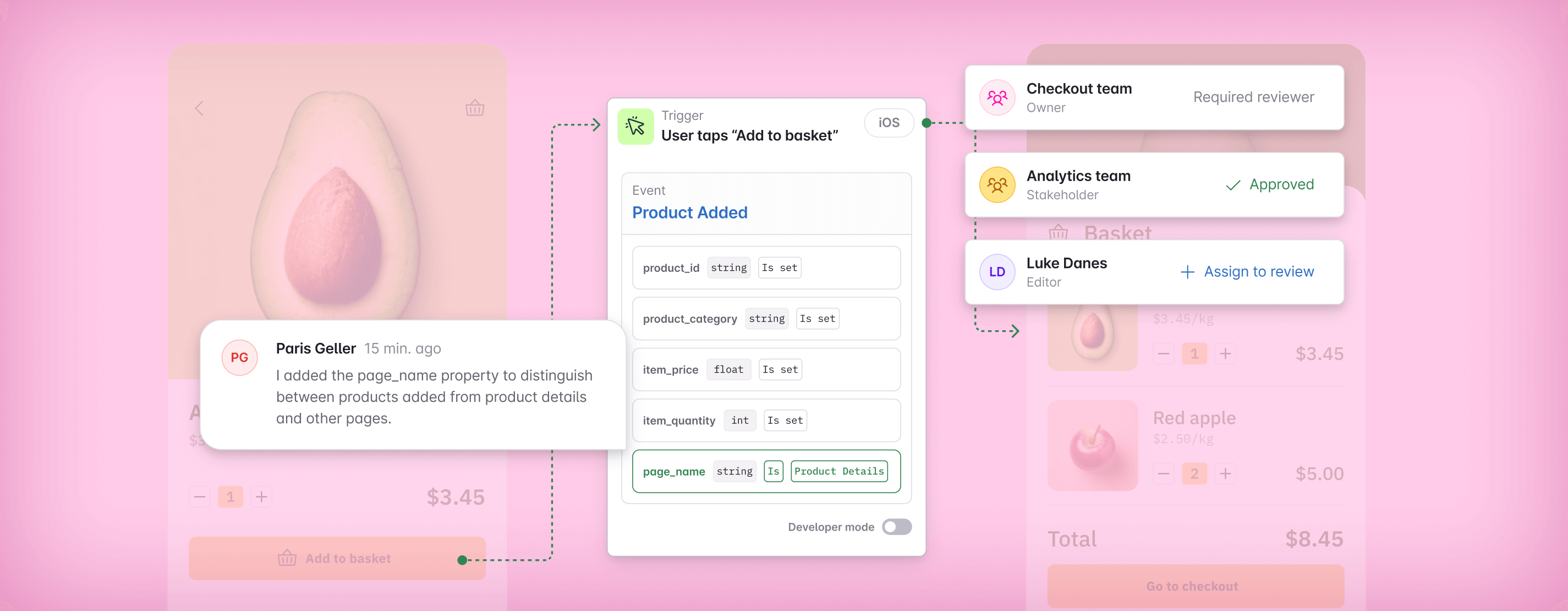How Wolt scaled data governance to power faster decisions across 10,000+ employees
Wolt, one of Europe’s leading food delivery platforms, has built its success on continuous improvement and innovation. But as the company expanded across 25+ countries and scaled to over 10,000 employees, fragmented data definitions and inconsistent event tracking created serious friction. Engineers and analysts lacked a shared language for tracking, implementation took weeks, and data issues often surfaced only after decisions had been made.
YAML on Git worked for 10 people—not for 10,000. Avo helped us codify our data strategy and scale it across teams, tools, and markets.
– Jacopo Himberg, Director of Data at Wolt
With Avo and Mixpanel, Wolt replaced its brittle YAML setup with a scalable tracking workflow, embedding data quality into engineering processes and accelerating time to insight.
Challenge: YAML-based tracking slowed teams and caused implementation issues
Before Avo, Wolt was defining their event tracking in YAML files—shared via GitHub and versioned manually across more than ten product teams. This approach quickly became a bottleneck, leading to implementation delays, inconsistencies, and confusion around tracking terminology.
Product managers didn’t understand the YAML format. They had to come to us to add or change events. Then we’d open a PR to the tracking repo, ask the engineer to implement it, and hope for the best.
– Elmira Gatina, Projects Coordinator, Analytics Engineering at Wolt
Teams spent too much time translating tracking requirements between spreadsheets, repos, and Slack threads. And when implementation errors slipped through, it wasn’t always obvious what was missing or broken.
Solution: One workflow to align all teams on event tracking
With Avo as their tracking workflow layer and Mixpanel as their analytics platform, Wolt replaced their manual YAML process with a collaborative, quality-assured system.
Now product managers define event structures directly in Avo. Data teams review and approve the events, and engineers generate validated tracking code using Avo’s implementation tooling. Avo’s Inspector automatically flags missing or invalid events, giving Elmira and her team confidence in the data before it hits production.
Before Avo, tracking was one of the most time-consuming parts of my job. Now product managers take ownership of the event structure and I review and approve. It’s much faster—and way less painful.
– Elmira Gatina, Projects Coordinator, Analytics Engineering at Wolt
Avo didn’t just give Wolt a source of truth. It provided a shared, scalable data workflow that enabled Wolt to treat data as a product—complete with ownership, quality standards, and cross-team accountability. This alignment was key to supporting their rapid growth and expansion across multiple teams and markets.
Impact: Fewer errors, faster launches, and more time for analysis
Since implementing Avo, Wolt has cut time spent on analytics and telemetry work by 50%. Engineers no longer wait on analysts to prepare specs. Product managers understand what they’re tracking and why. And the data team can finally focus on the analysis work that drives strategy.
We moved from chasing tracking bugs to enabling real decision-making at scale.
– Jacopo Himberg, Director of Data at Wolt
By embedding Avo into their tracking workflow, Wolt established a culture of data ownership and accountability. Product managers, engineers, and analysts now share a common understanding of what’s being tracked and why—empowering faster experimentation, more reliable insights, and strategic decisions at scale.
Key Results
- 50% reduction in time spent on analytics and telemetry work
- Improved trust and visibility across 10+ product teams
- Enabled codified governance across 230+ databases
- Clean tracking feeds into Mixpanel for reliable analysis
- 50% reduction in time spent on analytics and telemetry work
- Improved trust and visibility across 10+ product teams
- Enabled codified governance across 230+ databases
- Clean tracking feeds into Mixpanel for reliable analysis
Industry:
Food delivery
Company:
10,001+
Location:
Helsinki, Finland
Tech stack:
Mixpanel, Snowflake, Looker, and Avo
Ready to elevate your data quality?
Book a demoBlock Quote
Subscribe to our newsletter
Lorem ipsum dolor sit amet, consectetur adipiscing elit, sed do eiusmod tempor incididunt ut labore et dolore magna aliqua.




